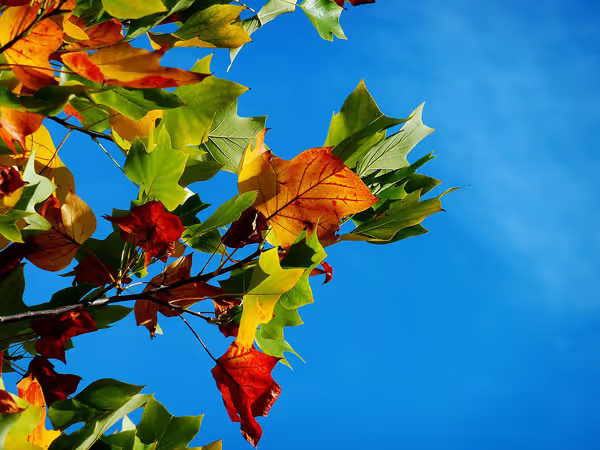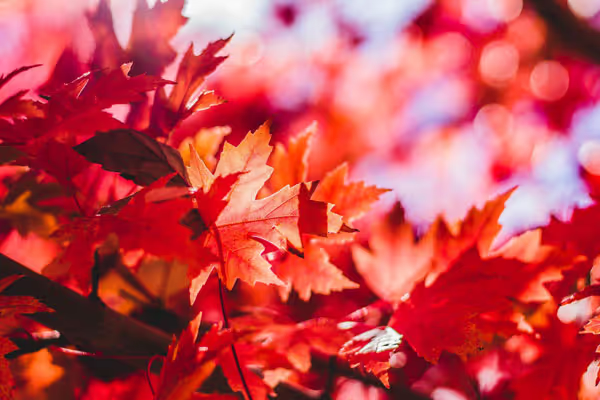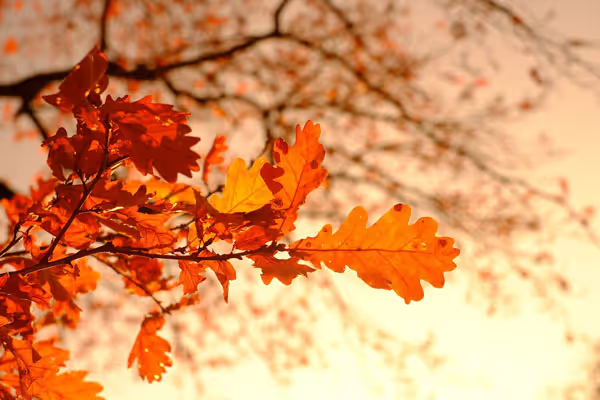Why Do Leaves Change Color in the Fall?



The summer has gone and fall has arrived in our little piece of paradise known as Ocean Shores. This means that the leaves on the trees are on full display with their wonderful colors, brightening up gardens and lifting people's spirits all over town. While it is very magical to watch the leaves make their seasonal color changes, it does beg an interesting question. Why do leaves change color in the fall? More specifically, what causes leaves that are lush and green all summer long to suddenly change into bright red, yellow, orange, and brown leaves? Let's find out!

There is a scientific explanation for why leaves change colors in the fall. The fall leaf life cycle begins at the end of summer as the days start getting shorter. As the days get shorter, the trees don't get enough sunlight to make food for themselves. Instead of struggling to make food throughout the winter, they shut down for the season. They stop producing chlorophyll, a green photosynthetic pigment that is found in plants, and allow their fall leaves to die a natural death. When the trees stop producing chlorophyll, the green color makes its way out of the foliage and reveals the “true color” of the leaves. Now you're probably thinking, 'WHAT? You mean leaves aren't naturally green?' Its true! They aren't. The natural colors of leaves are actually orange and yellow. The green color is just a cover that results from the trees producing Chlorophyll. Without Chlorophyll, they can't be green.

As the trees stop producing Chlorophyll, they begin to produce Anthocyanins, which are the pigments that give blue, purple, and red plants their rich coloring. In the case of trees, the Anthocyanins are red in color. Because of this, trees will have green, orange, or yellow leaves, before ultimately turning red as they make their way through the fall leaf life cycle. Some trees produce Anthocyanins more quickly than others. This means that some trees skip right past the orange and yellow color stages and proceed directly into the red leaf stage. In any case, the result is a beautiful display of leaves that change color in the fall.

You have probably noticed that the annual display of fall leaves changes from year to year. Some years, the leaves are looking their grandest. Other years, they look very brown and "blah". There are two reasons why both extremes occur. First, the fall leaves’ pigment is very susceptible to sunlight. If the fall is sunny and bright, the trees won't be looking their best because the pigments are breaking down quickly. Second, if the fall is unusually cold, the leaves will adopt a brown color. While leaves that change color in the fall are going through their fall leaf life cycles heading toward the doors of death, they are generally not dead yet. However, if a cold snap occurs, they won't survive, just like the leaves on most other plants. While knowing this information might take a little bit of the magic out of leaves changing color in the fall, there is no way that it can take the beauty of the process away. That is ours to enjoy once a year, every year!
References
© Ian D. Caldwell, October 2020
Touch whale bones, examine shipwreck artifacts and connect with the coast's living history.

Support our mission, get involved in educational programs, or contribute through donations and volunteering.